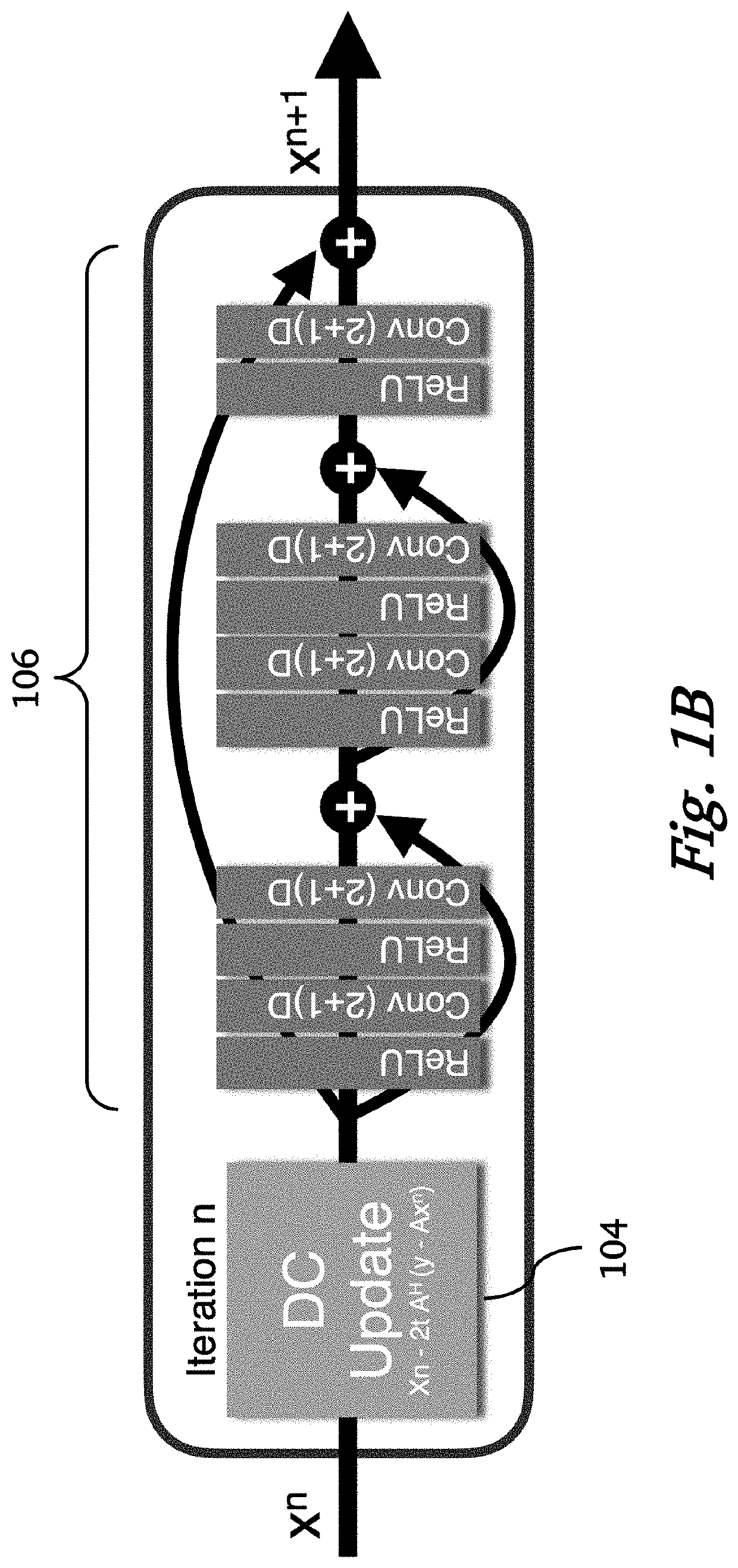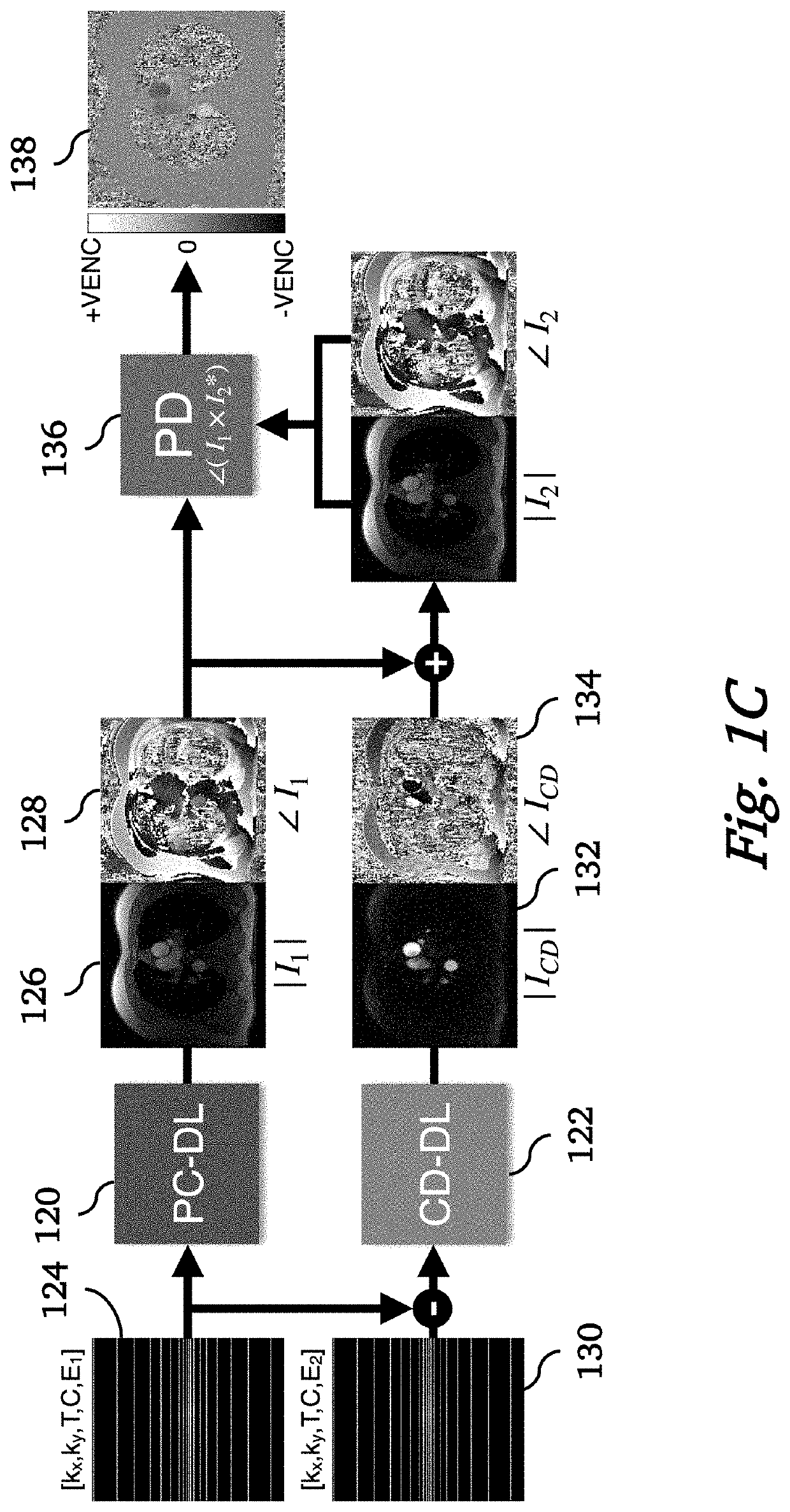Artificial Intelligence based reconstruction for Phase Contrast Magnetic Resonance Imaging
a phase contrast and magnetic resonance imaging technology, applied in the field of medical imaging, can solve the problems of reducing the accuracy, precision and repeatability of the technique, affecting the accuracy of the analysis, and unable to accurately describe the complexity of cardiac dynamics, etc., to achieve the effect of reducing the scan time, maximizing the snr, and increasing the spatial and/or temporal resolution
- Summary
- Abstract
- Description
- Claims
- Application Information
AI Technical Summary
Benefits of technology
Problems solved by technology
Method used
Image
Examples
Embodiment Construction
[0038]Herein is disclosed a deep learning-based reconstruction framework for highly accelerated 2D PC-MRI data that allows accurate and precise quantitative measurements. In one embodiment, a modified DL-ESPIRiT reconstruction framework for 2D PC-MRI includes an unrolled neural network architecture and a direct Complex Difference (CD) estimation approach (CD-DL). In one illustrative implementation, the CD-DL network is trained on 155 fully-sampled 2D PC-MRI pediatric clinical datasets. Fully-sampled data (n=29) is retrospectively undersampled (R=6-11) and reconstructed using CD-DL and a state-of-the-art parallel imaging and compressed sensing method (PICS). Estimates of peak velocity and total flow are compared between the fully-sampled, PICS, and CD-DL data to determine the highest acceleration rate that provides accuracy and precision within 15%. The retrospective analysis shows that 9× accelerated 2D PC-MRI images reconstructed with the proposed CD-DL framework provides higher ac...
PUM
 Login to View More
Login to View More Abstract
Description
Claims
Application Information
 Login to View More
Login to View More - R&D
- Intellectual Property
- Life Sciences
- Materials
- Tech Scout
- Unparalleled Data Quality
- Higher Quality Content
- 60% Fewer Hallucinations
Browse by: Latest US Patents, China's latest patents, Technical Efficacy Thesaurus, Application Domain, Technology Topic, Popular Technical Reports.
© 2025 PatSnap. All rights reserved.Legal|Privacy policy|Modern Slavery Act Transparency Statement|Sitemap|About US| Contact US: help@patsnap.com



